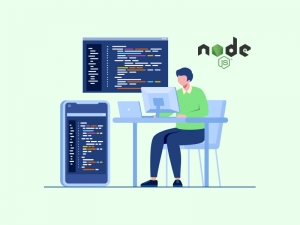These days, it’s easy to feel overwhelmed by all the information coming at us from every direction. Whether you're a student juggling assignments, a business leader handling endless reports, or a content creator working on the next big thing, one constant remains: you must process information efficiently.
That's where Text-to-Speech (TTS) software comes in. More than just an accessibility tool, TTS can significantly enhance your productivity, offering smarter, faster, and more inclusive ways to interact with digital content.
This guide will explain text-to-speech software, how it boosts accessibility and productivity, real-world use cases, and how to use it today.
What Is Text-to-Speech Software?
Text-to-speech (TTS) software is a form of assistive technology that reads digital text aloud using synthetic voices. It converts written words from documents, websites, or apps into spoken language, often in real time. With the rise of AI, many TTS tools now offer realistic, natural-sounding voices in various languages and accents.
Key Features of Modern TTS Tools:
- Natural voice generation (some even mimic human emotion)
- Multi-language and accent support
- Adjustable speed and pitch
- Integration with browsers, smartphones, eBooks, and productivity apps
- Compatibility with screen readers and accessibility platforms
TTS is no longer a novelty—it's an essential tool for streamlining information consumption.
Why Text-to-Speech Is Essential for Accessibility
Digital accessibility is more than a best practice—it's a necessity. According to the World Health Organization, over 2.2 billion people have vision impairment or blindness, and millions more live with reading challenges, such as dyslexia or ADHD. Text-to-speech software levels the playing field.
Here's how TTS enhances accessibility:
1. Empowers the Visually Impaired
TTS allows people with partial or complete vision loss to independently access websites, emails, PDFs, eBooks, and more. It replaces the need to rely on visual cues, improving autonomy and digital inclusion.
2. Supports Learning Disabilities
For individuals with dyslexia, reading comprehension issues, or attention disorders, listening to content is often more effective than reading it. TTS tools help these users process and retain information better.
3. Meets Legal Standards
Using TTS helps your website or digital content meet WCAG and ADA compliance. Businesses and educational institutions must aim to prevent legal complications while fostering an inclusive environment.
PRO TIP: Make your website accessible with text-to-speech integration
Boosting Productivity with Text-to-Speech
TTS isn't just about accessibility—it's also a serious productivity booster. By freeing your eyes and hands, you gain new flexibility in how and when you consume information.
Here's how text-to-speech enhances productivity:
1. Multitask Like a Pro
Whether commuting, exercising, or doing household chores, TTS lets you "read" while on the move. Turn your reports, blogs, or emails into audio files and consume them on the go.
2. Proofread More Effectively
Listening to your writing out loud is one of the best ways to catch typos, awkward phrasing, or repetitive sentences. Many professional writers and marketers use TTS tools to polish their work.
3. Reduce Screen Fatigue
If you spend long hours staring at screens, your eyes will thank you for the break. TTS allows you to rest your vision while still absorbing important content.
4. Improve Focus and Retention
Many people retain information better through audio. TTS is a powerful way to boost comprehension and memory if you're an auditory learner.
PRO TIP: Convert long articles or research papers into MP3 files using TTS software for efficient listening anytime.
Top Use Cases for Text-to-Speech Software
Text-to-speech software fits seamlessly into a variety of industries and personal workflows. Here are a few powerful examples:
1. Education and eLearning
Students with different learning needs can benefit from TTS when studying complex material. Teachers also use it to make learning content accessible to all.
2. Remote Work and Business
While commuting, professionals can listen to client emails, meeting summaries, and reports. Executives use TTS to keep up with news or industry articles on tight schedules.
3. Content Creation and Marketing
Writers and bloggers use TTS to review drafts, and video creators use TTS voices to generate narration and voiceovers without recording themselves.
4. Language Learning
TTS tools support pronunciation and language immersion. Learners can hear how native speakers speak words in different accents and tones.
5. Customer Service and Automation
Many chatbots and IVR systems use TTS to deliver human-like responses to customers. Other uses include utilizing accessibility features across websites and applications.
Best Text-to-Speech Software Options in 2025
Let's look at a few highly rated TTS tools that cater to different needs and budgets:
|
ToolKey |
Features |
Best for pricing |
|
AllVoiceLab.com |
AI-driven TTS, multiple voice styles, easy voice editing |
Affordable subscription plans |
|
UIVoiceovers, educators, YouTubers |
||
|
NaturalReader |
Realistic voices, browser extension, file upload |
Free + Paid plans |
|
Personal & educational use |
||
|
Murf.ai |
AI voices with emotion control, voiceovers |
Starts at $19/month. |
|
Content creators & marketers |
||
|
Google TTS |
Cloud-based API, broad language support |
Developers & enterprise apps Pay-as-you-go model |
|
Amazon Polly |
Neural voice engine, lifelike tones Businesses & tech platforms Pay-per-character model |
Pay-per-character model |
|
Businesses & tech platforms |
||
|
Speechify |
Mobile-friendly, Chrome extension |
Free + Premium available |
|
Busy professionals & students |
How to Start Using TTS in Your Workflow
Ready to get started? Here's a simple step-by-step approach:
1. Define Your Needs
Are you using TTS for personal productivity, business accessibility, or content creation? Choose tools that fit your primary goal.
2. Choose a Platform
Depending on your daily routine, you can select from browser extensions, desktop apps, mobile apps, or cloud-based APIs.
3. Install and Integrate
Most tools offer a one-click setup. You can integrate TTS into your browser (e.g., Chrome extension), apps like Google Docs, or use it with screen readers.
4. Customize Your Experience
Adjust voice speed, pitch, and accents. Some tools even allow you to create custom voice profiles or clone your voice.
5. Automate the Process
Set up automated workflows to convert documents or emails into audio using tools like Zapier or IFTTT.
PRO TIP: Create an "audio inbox" by syncing your email content with TTS software for a hands-free way to stay updated.
Final Thoughts: A Smarter, More Inclusive Future
Text-to-speech technology is no longer a "nice-to-have" feature—it's a powerful, everyday tool that improves how we work, learn, and communicate. Whether building a more inclusive digital experience or simply trying to manage your time better, TTS is a brilliant addition to your toolkit.
Don't wait to transform your workflow. Start using text-to-speech software today and experience the freedom of listening over reading.






